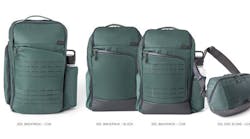Source The Charlotte Observer
A resolution appears to have been found in the long debate over whether Charlotte-Mecklenburg Police officers on patrol can wear vests on the outside of their uniforms.
A CMPD human resources email sent to officers on Thursday announced that any patrol officers or patrol sergeants could request an “outer carrier” vest, signaling a policy change that previously limited who in the department could wear them.
“I’m excited that it’s finally been ... approved, but a little bit frustrated that it’s taken this much effort for them to finally get it,” said Daniel Redford in an interview with The Charlotte Observer. Redford is the president of the Charlotte-Mecklenburg Fraternal Order of Police.
Some CMPD tactical units, such as bike officers, were assigned to wear outer carrier vests, department Public Affairs Director Sandy Vastola previously said.
Other than those tactical units, patrol officers could get the vests by making a request for an Americans with Disabilities Act medical accommodation, Redford said.
But now, patrol officers and patrol sergeants making the request don’t have to worry about having a medical reason, he said.
CMPD did not publicly announce the policy change from Chief Johnny Jennings, who has previously said he didn’t like the militarized look of the vests because it didn’t conform with his community-policing philosophy.
The FOP, which said it has been pushing for the new vests for years, posted on social media about the police email. The local police organization, as well as City Councilman Tariq Bokhari, have been critical of Jennings over his position opposing broad use of the vests.
Redford said the change is better for the physical health of officers. The vests often have pouches and pockets for officers to take items off their belts and instead wear them on their chest.
A study by the University of Wisconsin Eau Claire, the Mayo Clinic, and the Eau Claire Police Department found that, while the vests weighed more, the weight was more evenly distributed, causing less strain on the hips and lower back.
But according to Jennings, in a statement in June, the vest’s military appearance “contradicts the community-oriented policing philosophy” he has championed.
He wasn’t alone in that concern. In 2020, Toledo, Ohio, Police Chief George Kral banned the vests from the Ohio police department. Similarly to Jennings, he said the vests looked too militaristic, according to WTVG.
“Picture this: two, six-foot-three, big strapping policemen are in a house, and there’s a five-year-old child … in this scene. And they see these guys with … Tasers and everything else on the vest. It’s intimidating, and the last thing we want to do is intimidate people,” Kral said at the time.
Jennings’ statement also said there was misinformation circulating about outer carrier vests.
“These vests offer no additional ballistic protection and raise officer safety concerns. It is important to note that three fallen officers wore outer vests on April 29,” the statement said, referring to the east Charlotte shootout that left four officers dead. “Certain tactical units within CMPD are currently issued outer carrier vests, but I will not support outer carrier vests as standard patrol-issued equipment.”
Bokhari also previously said some CMPD leaders told him they were concerned the vests would make it easier for assailants to grab hold of officers.
“I’m a bit skeptical as to the reasoning behind why, all of a sudden, they just decided to do it, but also appreciative of the fact that we have been fighting for this and that it finally has caught the attention of somebody that’s able to make this decision possible,” Redford said.
The vests allow ballistic paneling to be relocated on an officer’s body. Typically, the paneling, which is used to stop bullets, is worn under the uniform, he said. But it can instead be put inside the vests and worn outside of the uniform shirt.
It’s not clear how long the process will take or when officers who request one will start to receive the vests, Redford said. Each vest has to be tailored to the officer requesting one.
“I wish we didn’t have to go through an application process for officers to submit any data. I think that if they were deeming it to be a piece of equipment that is something that’s beneficial for the health and wellness of officers, it should be standard issue,” Redford said. “But if what it takes is somebody just submitting a piece of paper to get it for now, we’ll take it as a win and deal with that later.”
_________
©2024 The Charlotte Observer.
Visit charlotteobserver.com.
Distributed by Tribune Content Agency, LLC.


